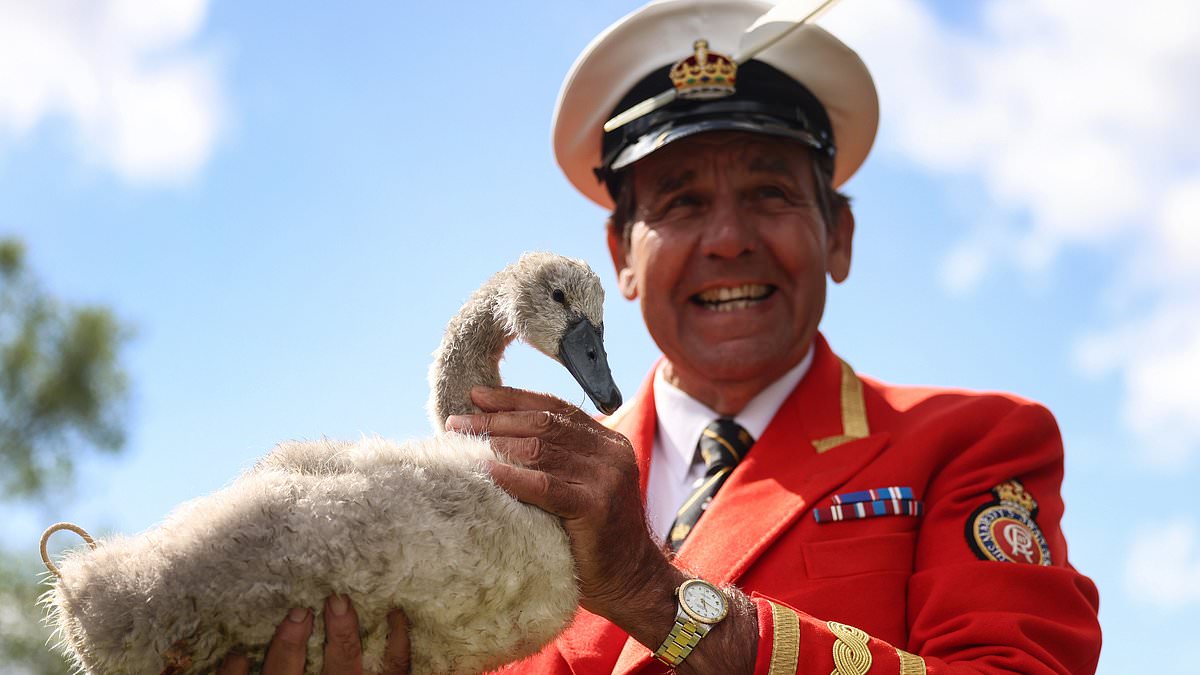The number of swans on the River Thames has begun to go up again after a worrying dip, according to an annual survey.
The traditional five-day count known as swan upping found 115 young birds this year, compared to just 86 in 2024.
There has been a worrying decline in the numbers of the beloved royal birds in recent years – with the drop blamed on avian flu and human cruelty.
But the new figures released by the King’s swan marker, David Barber, this week suggest the 45 per fall over the past two years has been reversed.
However, the numbers are still down on the 155 swans that were counted in 2022.
Mr Barber said according to The Henley Standard: ‘So far it has been very positive.
‘It’s an improvement on last year because we’ve had the bird flu for a few years and that seems to have died out on the Thames now and the breeding pairs suffered badly and now it seems quite good so I’m pleased with it.
‘Last year was the lowest number we’ve had for years and years and years and since I’ve been doing it and that was only 86 cygnets [across the whole bird count].’
Swan upping is the annual census of the swan population and the ceremony is used to count the number of young cygnets, check their health and ensure numbers are maintained.
The ‘swan uppers’ use traditional rowing skiffs for their five-day journey each year upstream along the River Thames to Abingdon Bridge in Oxfordshire.
The ceremony dates back to the 12th century, when the ownership of all unmarked mute swans in Britain was claimed by the Crown in order to ensure a ready supply for feasts.
The focus is now on conservation and education, with local primary school children invited to Q&A sessions throughout the week.
In particular, Mr Barber wants the event to discourage young people from mistreating swans.
Recently there have been incidents reported of people shooting the royal birds with catapults and air guns.
Swan upping has also become a popular spectacle with crowds gathering along the banks of the River Thames.
